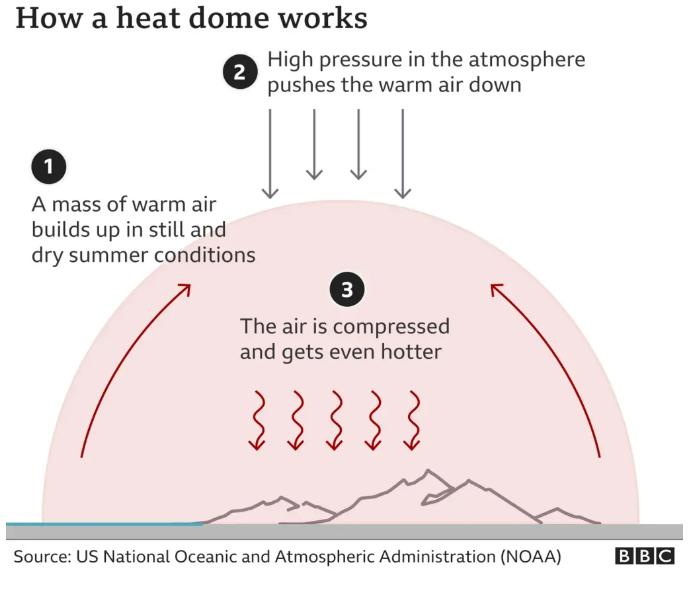As heatwave records plague Southwest, relief is in sight
Excessive heat warnings are set to expire this weekend after daily temperature records have been set across the US Southwest.
Extreme temperatures are expected to continue in California, Nevada and Arizona into Saturday.
An excessive heat warning in Las Vegas will expire Saturday night with temperatures remaining around 115F (46.1) on Saturday and dropping to 112F (44.4C) on Sunday.
Similar to the trend throughout last week, temperatures will remain high at night hovering around the low 80s.
On Thursday, the heat hit 113F (45C) in Phoenix. Record-breaking temperatures led to 11 people taken to the hospital while waiting to attend a Donald Trump rally on Wednesday.
Phoenix will see some slight relief after the heat warning expires Friday night, but the high temperature remains in triple digits for Saturday at 108F (42.2C) and 104F (40C) on Sunday.
National Weather Service (NWS) alerts remain in place on Friday for the wider area, covering a population of around 20 million people.
The heat marks the first round of dangerous temperatures this season with the possibility of excessive heat persisting into next week for some areas, according to the NWS Weather Prediction Centre.
Scientists say extreme weather events are becoming more frequent and intense as a result of climate change.
Although the official start of summer is still two weeks away, NWS has advised people in the affected areas to limit outdoor activity and stay hydrated.
It earlier warned that there would be little overnight relief from the scorching temperatures.
On Thursday, NWS thermometers showed new highs for 6 June in locations that included Las Vegas and Death Valley. The latter location hit 122F (50C).
The fire department in Clark County, home of Las Vegas, said it responded to at least 12 calls since Wednesday related to heat exposure. Nine of those callers needed to be treated at a hospital.
Reporting the reading of 113F (45C) at Sky Harbour, the NWS's Phoenix office said this exceeded the previous high for 6 June that was set in 2016.
Phoenix is America's hottest big city, and there were 645 heat-related deaths last year in the wider Maricopa County.
Firefighters have been put on standby to submerge heat-stroke victims in ice. Some popular local hiking trails have been closed off.

The group of 11 Trump rally attendees were later released from hospital, the Associated Press reported.
In preparation for a rally in Las Vegas on Sunday, where temperatures are expected to reach 104F, the Trump campaign told CNN they planned to double the number of EMS staff on site, provide more than 38,000 bottles of water and a cooling tent with air conditioning.
The Southwest's first heatwave of the year is the result of a heat dome: an area of high pressure in which hot air is pushed down and trapped, causing temperatures to soar over large areas.
Temperatures are about 20-30F above average for this time of year.
While heat domes were once described as rare, they are becoming more common and intense because of human-induced climate change, scientists say.
The European Union's Copernicus Climate Change Service announced on Wednesday that the world has surpassed one full year of back-to-back monthly heat records.
The climate change service also found that May marked the 11th consecutive month that the global average temperature was at least 1.5C above the pre-industrial average of the late 1800s, which references a period before there was a significant increase in emissions of greenhouse gases.
Scientists say the high temperatures were driven by human-caused climate change combined with the El Niño climate phenomenon.
"We are living in unprecedented times," Carlo Buontempo, director of Copernicus, said earlier this week.

